Metrics that Matter: 7 KPIs to Keep Your Agency Profitable
December 5, 2017Last updated on October 1, 2024

What are the metrics you need to stay on top of in order to keep your business in the black? I'm sharing the most important KPIs and how to track, report, and act on them.
If you run an agency, profitability is the goal. Full stop. Yes, you want to enjoy what you do and produce meaningful results for clients, but if you’re consistently losing money and never getting ahead, what’s the point of all that hard work? You’re not in this for your health.
Knowing whether or not your agency is profitable isn’t something you feel in your gut. Profitability is based on real, factual numbers.
To keep your business running smoothly, you need to keep a sharp eye on specific metrics, like key performance indicators (KPI). Understanding your KPIs will help you make better business decisions, and allow you to spend more time enjoying your life and less time worrying about whether you have enough cash to make payroll.
Let’s look at the profit metrics your agency needs to stay on top of to stay in the black. We’ve organized them under the general categories of acquisition, retention, and profitability.
Acquisition KPIs
1. Number of pre-qualified leads
Hopefully, you already have a system for bringing in new leads and converting them into clients, but how do you measure that?
In a given time period, let’s say, a month, how many new qualified leads are in your pipeline? Just knowing that number gives you a starting point for predicting where your sales will be in the next quarter. The key here is to focus on qualified leads, not every tire kicker who comes looking to price shop.
As your sales team tracks new leads coming in the door, they should make note of where the best ones are coming from. Are they referrals? Personal contacts? Subscribers of your agency’s content? Google searches?
Once you establish where your best leads are coming from, then you can double down on what’s working.
As you monitor the number of leads coming in each month, you can better predict your revenue. Knowing that information helps you to decide whether you need to hire new employees soon, stay the course with your existing team, or lay people off (which hopefully you don’t have to do).
2. Number of sent proposals
It goes without saying that great proposals are a critical part of closing deals.
While you shouldn’t send a proposal to every Tom, Dick, or Harriet who comes knocking, all of your qualified leads should get to the proposal stage as quickly as possible.
If you have lots of leads coming in but your business development team isn’t sending proposals, something is wrong. Either the leads are weak and not making it through the qualification process, or your biz dev team is sitting on the leads too long, and you run the risk of them going cold.
A common issue many companies face is that sent proposals sit in the pipeline for 30, 60, 90 days (or even longer!) without closing.
3. Value of pipeline + close rate
Your pipeline consists of draft and sent proposals. In other words, proposals you’re working on, or proposals on which you’re awaiting a decision.
Much like the number of leads and number of proposals, the pipeline value helps you anticipate the coming months, for better or worse.
However, it doesn’t matter how massive your pipeline is if deals aren’t closing. That’s where your close rate comes into play.
Your close rate is the percentage of proposals that close. Ideally, you want both a big pipeline and a high close rate, but of the two, it’s better to have a high close rate.
For example, let’s say your pipeline contains ten deals for roughly $100,000 each. Your pipeline is $1,000,000, and your close rate is 40%. You can reasonably predict that you’ll close $400K within the next 30-60 days.
On the other hand, you might have a smaller pipeline with ten deals for $50,000 each. You have half the pipeline size ($500K), but at an 80% close rate you’ll close the exact same in revenue ($400K) but with less effort.
While this may seem oversimplified, the lesson is: be judicious about which leads are proposal-worthy so you spend less time writing proposals and pitching to close work, which brings us to...
4. Client acquisition cost (CAC)
Every business, no matter the industry, needs to consider their client acquisition cost.
Basic economics would tell you not to spend more money to acquire a client than you’ll make off them over the course of their lifetime as your client.
While flying your team across the country to pitch a new client in person may virtually guarantee the deal, if the value of the deal isn’t much higher than the cost, you’re going to lose money.
You calculate your CAC by totalling up all of your sales and marketing costs in a given time period and divide it by the number of new clients you closed during that same period.
Let’s say you have four salespeople who each make $5,000/month + 10% commission. You also spend $10,000/month on marketing activities like PPC, marketing automation, and webinars, for example.
Your crackerjack sales team’s 80% close rate netted you eight new clients, each deal valued at $60,000.
Base sales and marketing costs are $30,000. You also closed $480K total in business, so the commission is another $48,000.
Your sales and marketing costs were $78,000 for the eight clients, so your cost to acquire each of those clients was $9,750.
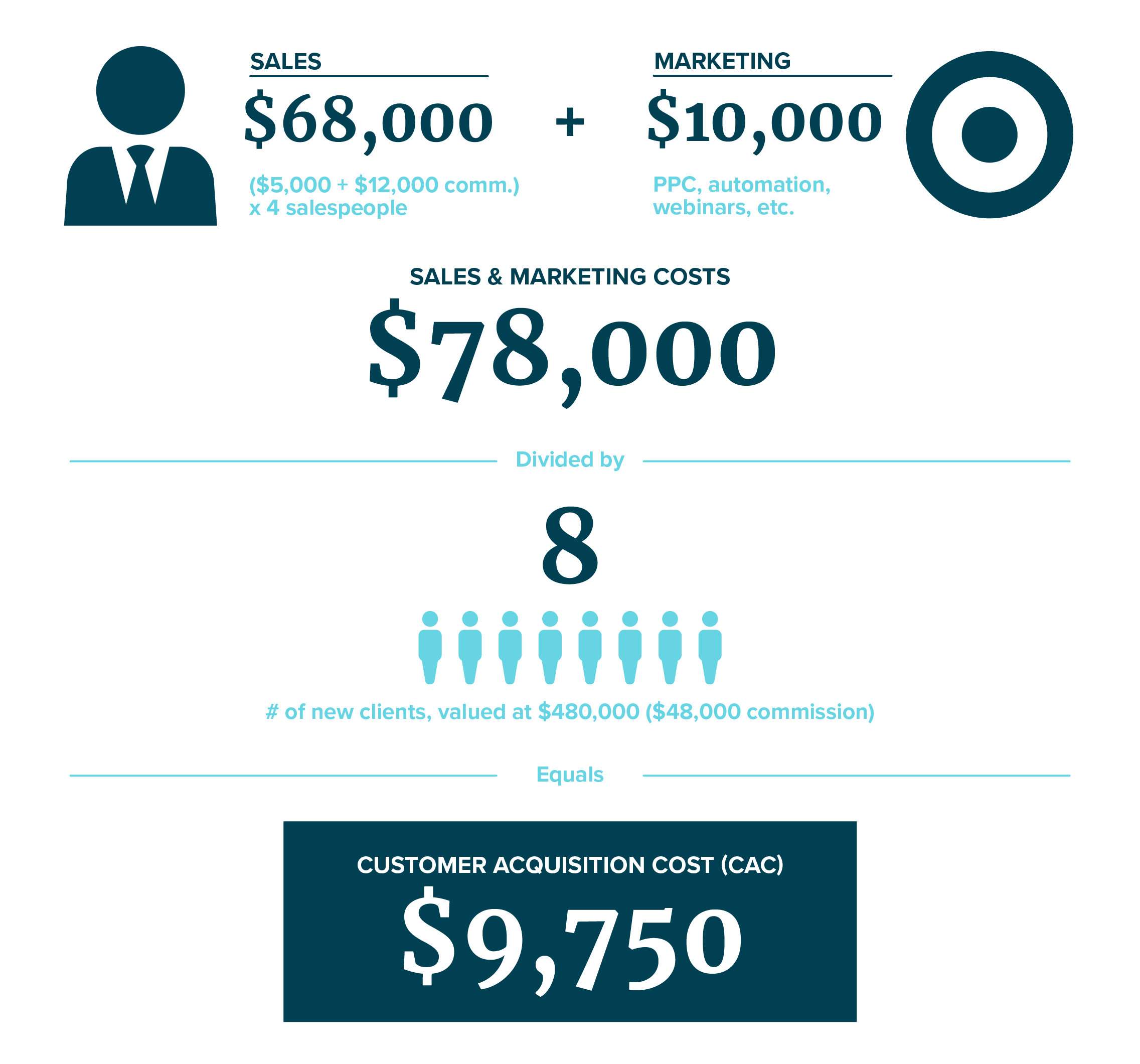
A CAC of one-fifth the value of the deal may seem pretty good, but if you’re in a service based industry, you still need to perform the work involved in the project or retainer to fulfill the contract. So you’re not quite in the black yet, which is why you need to focus on profit.
Looking at your acquisition metrics helps you predict what your sales will be in a given month or quarter, you’ll know which salespeople are underperforming, and which marketing channels to spend more money on.
Retention KPIs
5. Lifetime value (LTV)
A client’s lifetime value is not the initial sale - it’s the total revenue you’ll receive from them averaged across all of your clients for as long as they are clients, which could be years.
So even though the initial value of a contract might have been $60,000, you could end up making 10x that over the course of the client’s lifetime. LTV can be tricky to calculate, and you need a significant amount of historical data to do it accurately.
A simplified version of LTV takes the average value of a transaction x average transactions per year x the average client lifespan. If your average contract is $60,000 per client, and each client signs two new contracts per year, and remains a client for an average of three years, your LTV would be $60,000 x two per year x three years = $360,000.
By keeping an eye on your LTV, you can determine how much to spend on acquisition costs and whether you’re retaining customers over the long term.
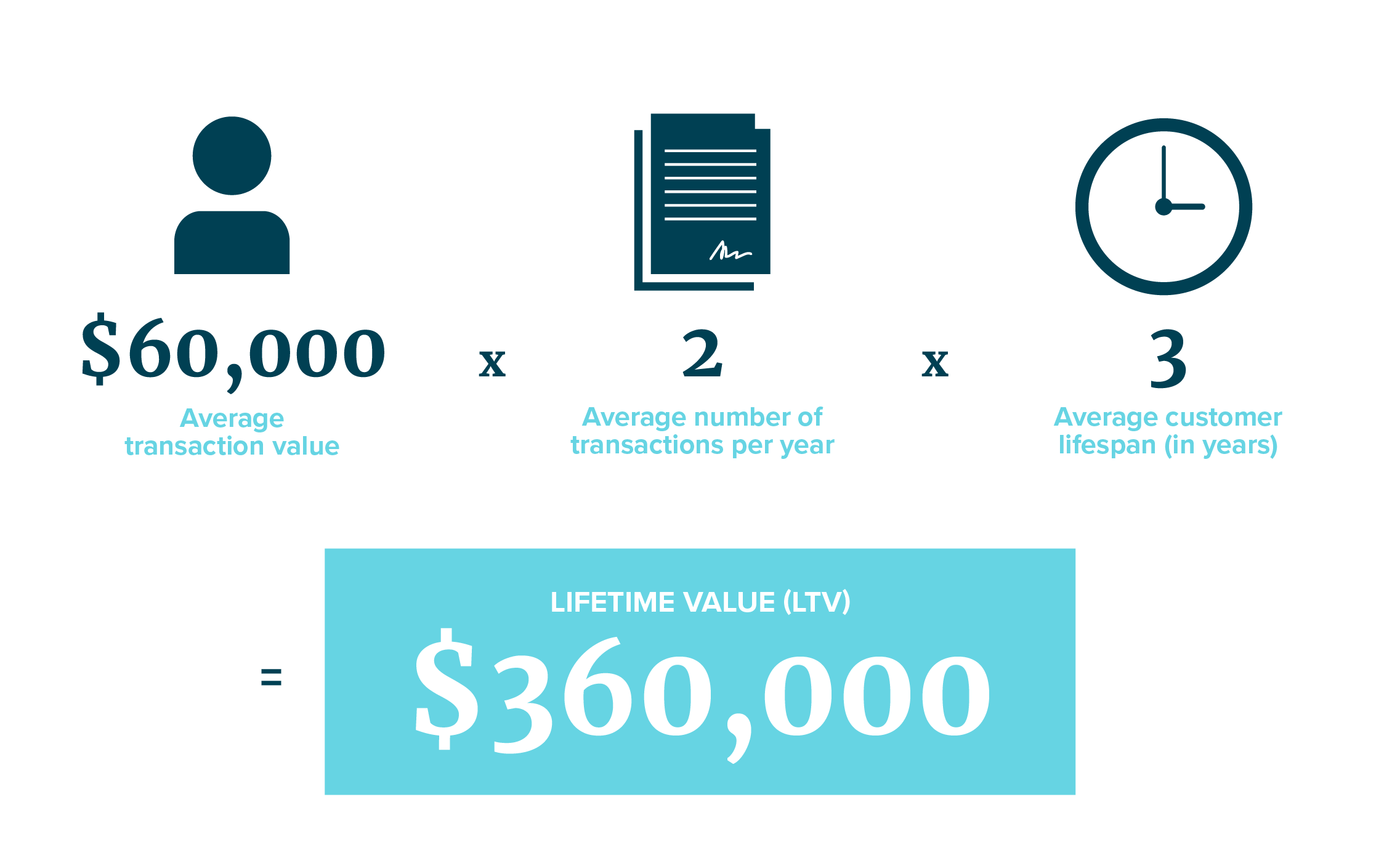
To maximize LTV, you need to emphasize, encourage, and train your account managers to upsell and cross-sell clients so you can extract as much revenue as possible while providing value. It’s much easier and cheaper to sell to an existing client than a new one.
It’s critical to keep good clients happy and retain them. It increases their lifetime value and means you don’t need to overextend your sales team to constantly bring in new clients to replace the existing ones you lost.
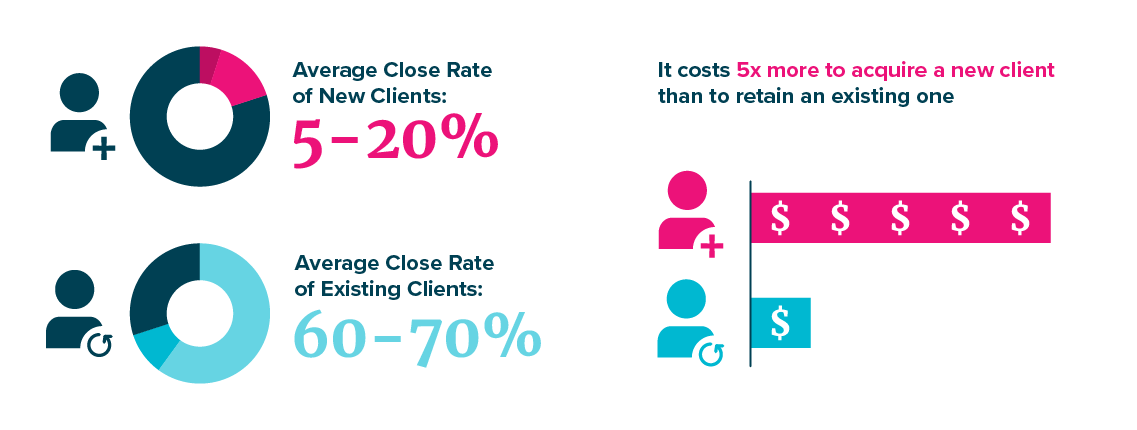
Profitability KPIs
6. Billable people utilization rate
If you want to improve your agency’s profitability, you must track your employees’ time. Your people are your assets, and their time is your currency. At the end of the day, you’re trading hours for dollars. This is true even if you charge fixed cost or employ value-based billing (such as the percentage of sales you generate for clients).
Most agency employees hate filling out timesheets, but there are great tools out there like Timecamp, Tick, or Harvest that make it easier and a little less painful. They’ll probably still hate tracking their time, but that’s OK, it’s how you pay the bills, and them.
Each of your billable employees (not including sales, controllers, or admin staff) has a utilization rate, which is the percentage of their time that is billable.
The best way to calculate the utilization rate is to take their billable hours – in-scope hours you can attribute to a client – and divide them by the 40 hours in a workweek.
So if 35 hours in an employee’s recorded timesheet are billable, 35/40 gives them a 90% utilization rate.
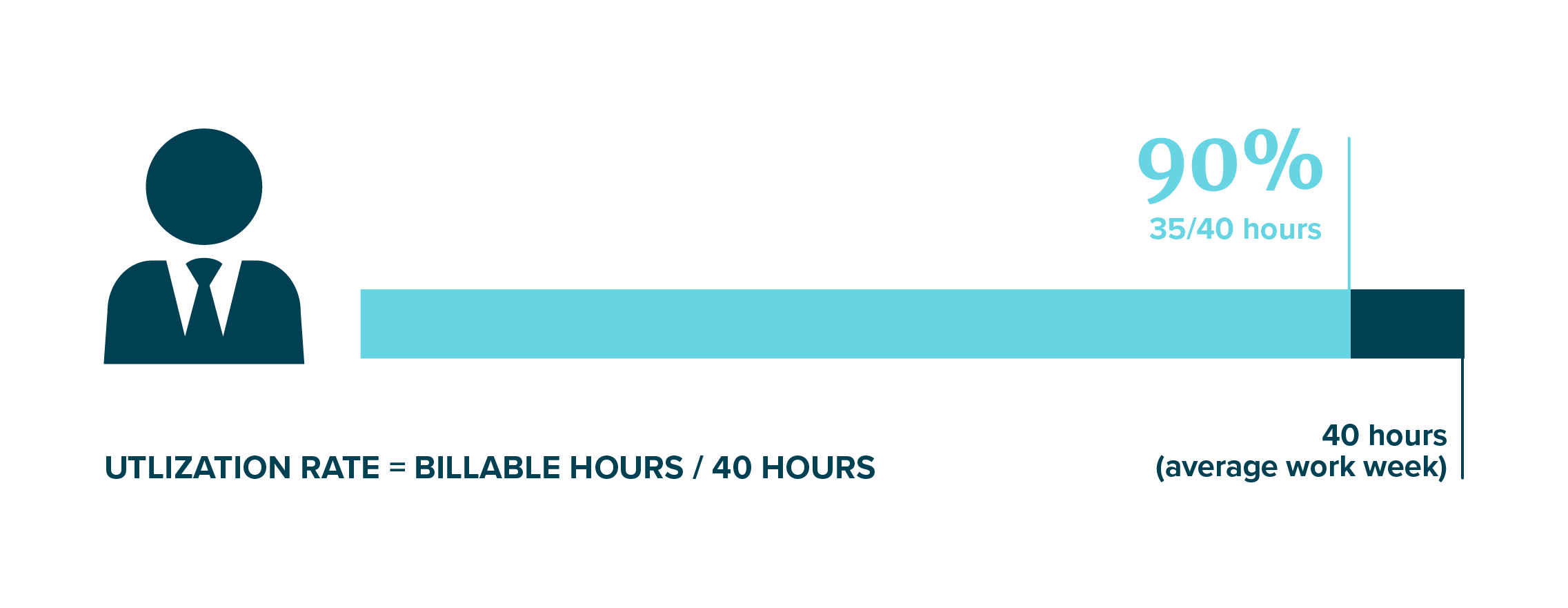
If they’re working more than 40 hours/week of in-scope work with no overages, it is possible for them to have a 100%+ utilization rate. Give those people treats and presents to thank them, but be careful they don’t burn out.
Next, average out the utilization rate across the whole company. The overall utilization rate will help you determine billing targets.
While you should never expect the utilization rate to be close to 100%, you do need to keep a reasonably tight grip on the metrics and push your low performers to up their game, perhaps providing a reward to people with the highest number each month.
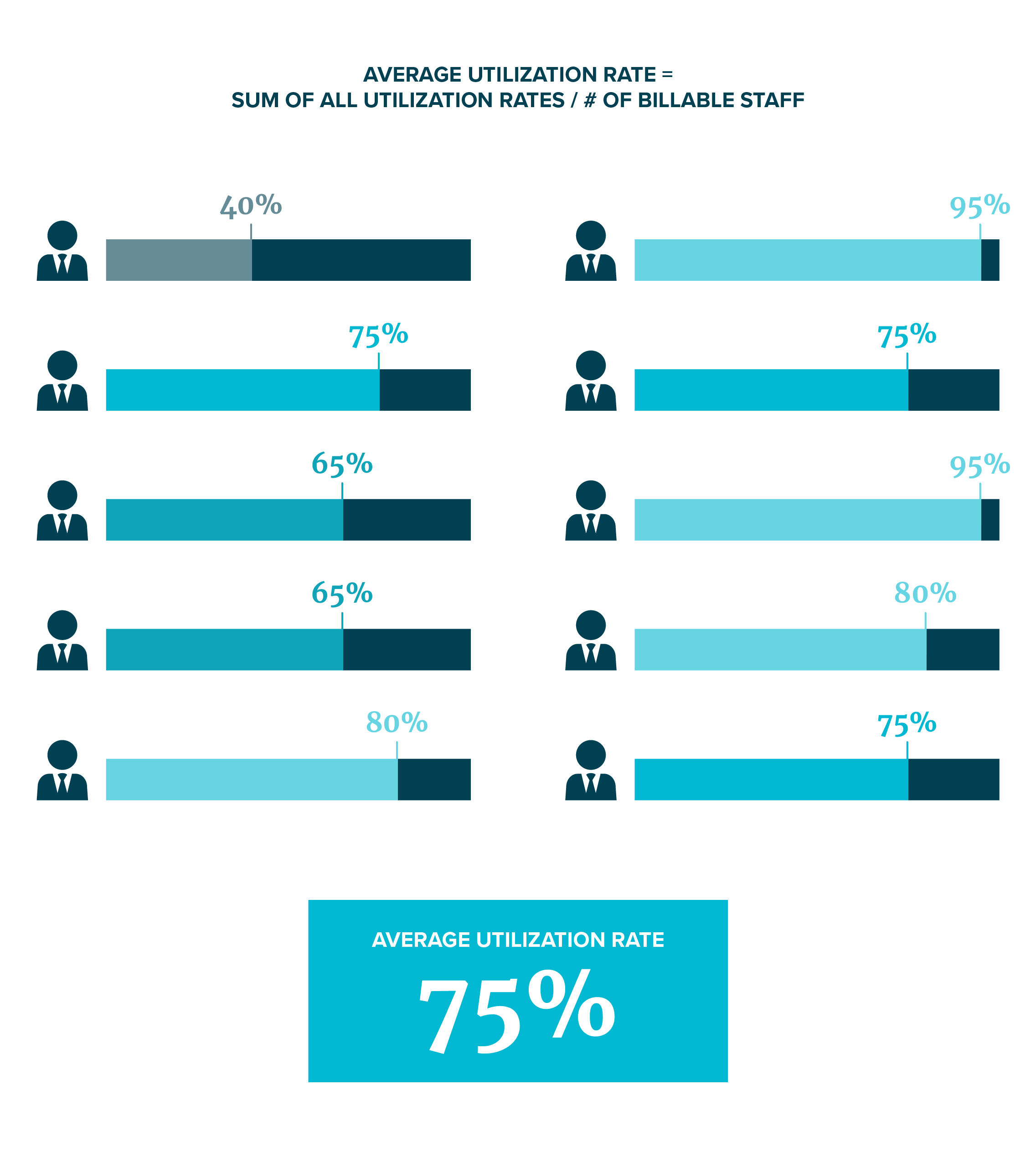
7. Profit margins
This is what it’s all been leading up to. At the end of each month/quarter/year, are you taking in more money than you spend?
The show Mad Men may have given the impression that being an agency owner is about well-tailored suits, office flings, and straight whiskey (not necessarily in that order), but the truth is, running a profitable agency is damn tough.
Due to the nature of the business, agencies run on notoriously razor-thin profit margins, so if no one is keeping a close eye on the numbers, the whole thing falls apart. You should be making at least 10-20% in profit margins at the end of the year outside of your salary. Otherwise, it’s hardly worth the stress and risk of running a business.
That said, here’s how to calculate your margins:
Sit down with your accountant and take all your monthly expenses - salaries, contractors, rent, supplies, software, food, travel, etc., - and total it up.
Let’s say it’s $100,000/mo or $1.2M/year. Your minimum goal is to invoice $120,000/mo or $1.44M/year. That leaves you with $240K in profit at the end of the year.
That’s not terrible, and it would make for a more than a decent bonus, but it won’t make you rich, which is why most agency owners aim to scale their agency while keeping a healthy margin.
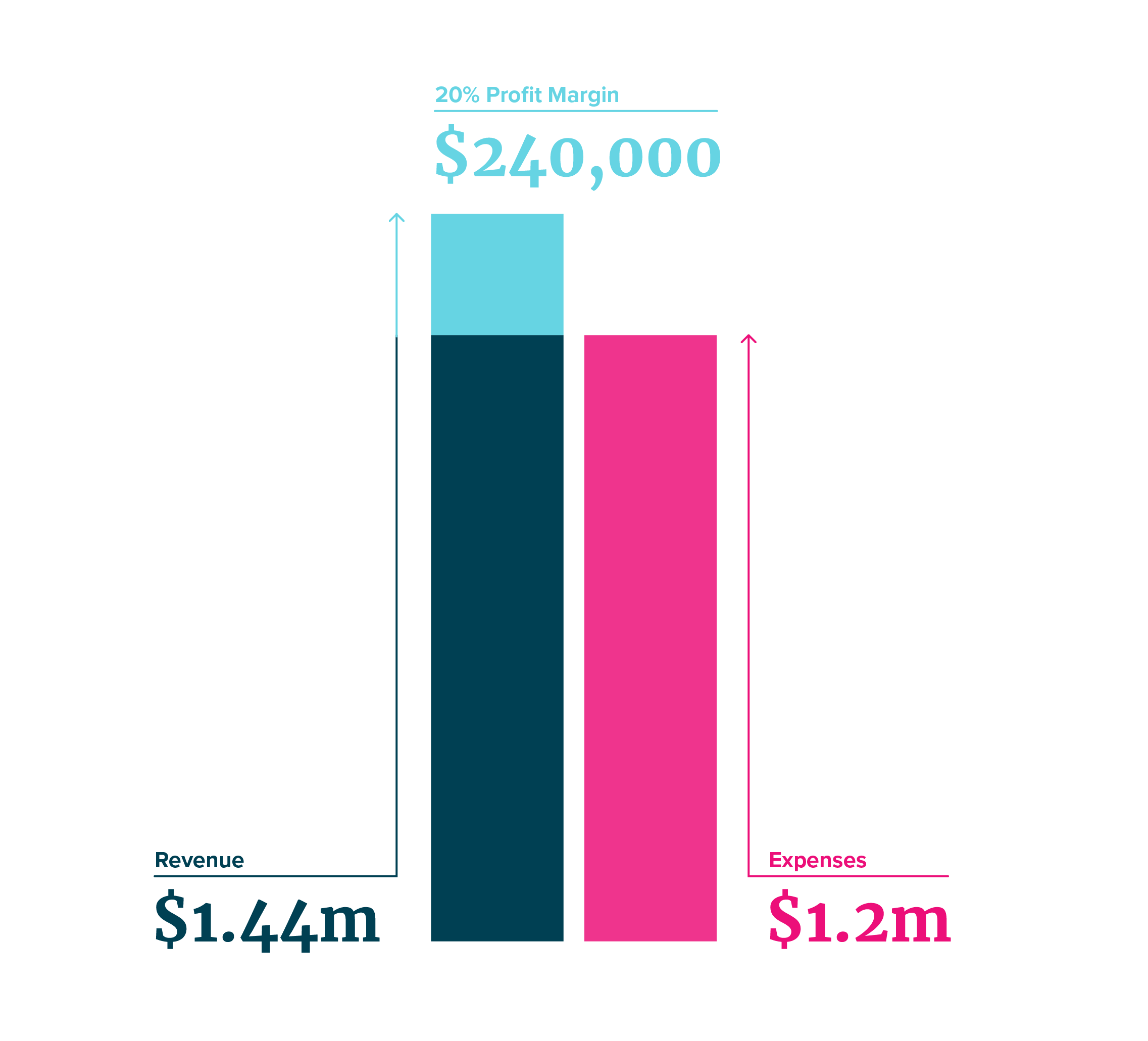
Once you’re at $10M in revenue, 20% margins mean you’re running a lucrative business with $2M in profit each year. In this example, let’s use $120K as our target for the month.
Look at all your billable staff’s hours and utilization rate. Let’s say you have ten billable employees. A 40-hour work week x 4 weeks per month x 10 employees = 1,600 hours. Your average utilization rate is 75%, which gives you 1,200 of billable hours each month.
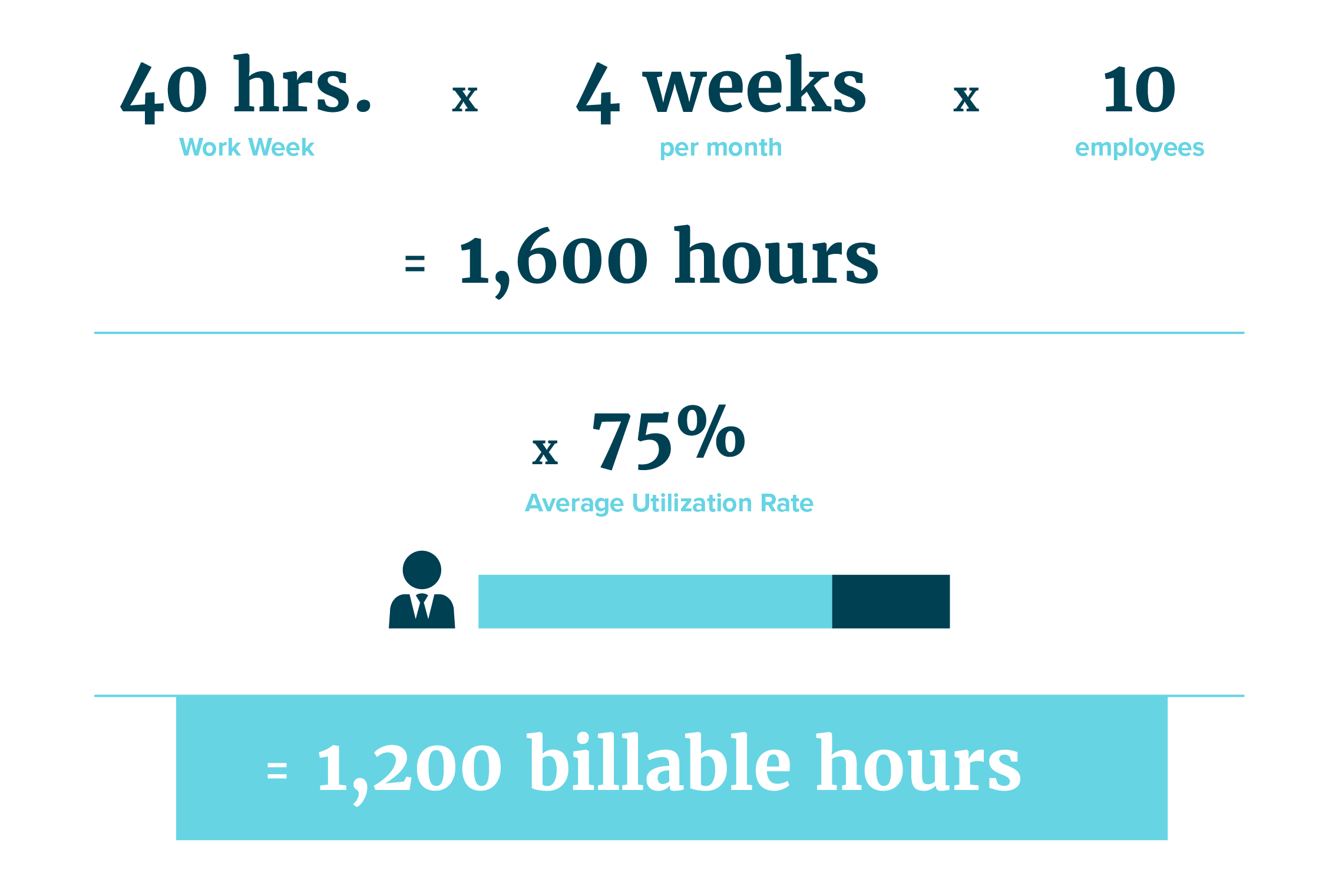
$120,000 / 1,200 hours = $100 is what you need to bill per hour to be profitable. $83/hour is break even, and any less you’re losing money. If you can get away with billing $200/hour, all the power to you.
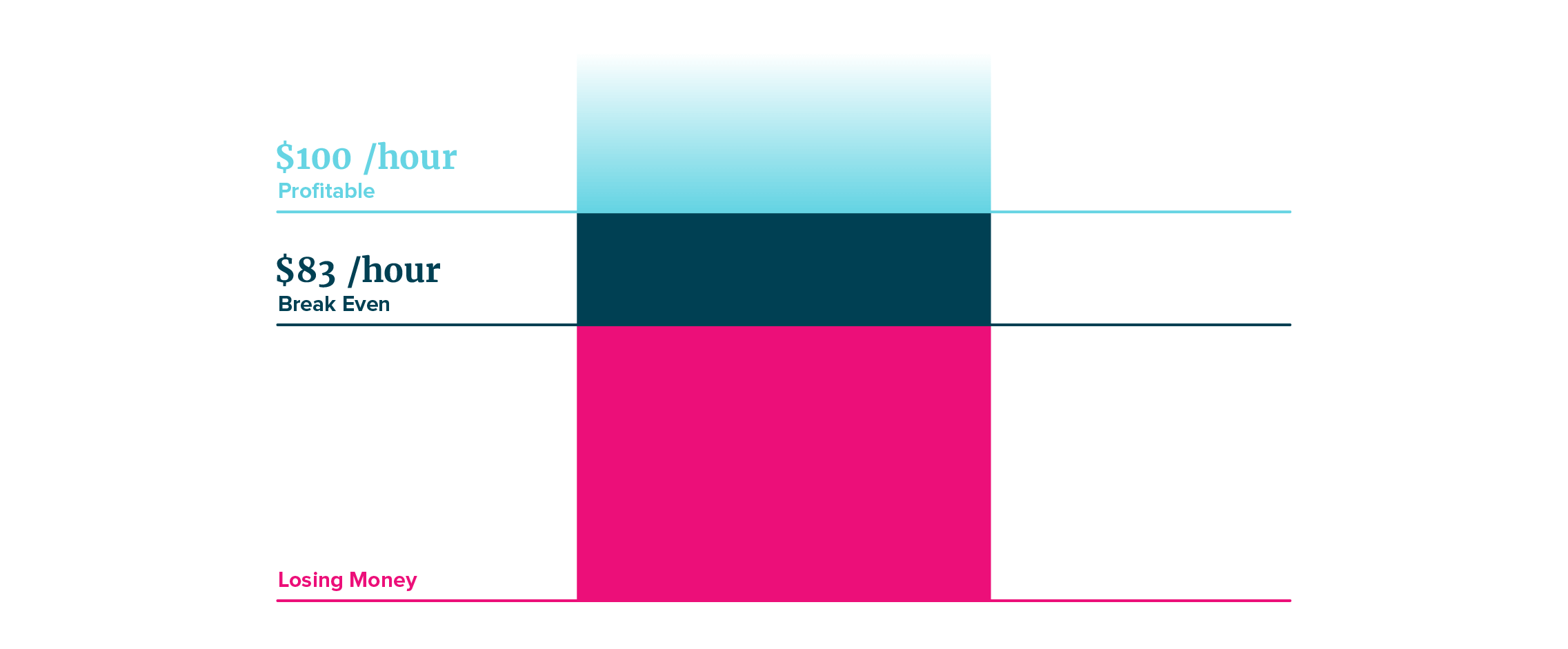
Own your agency's KPIs
Keeping a watch on these agency metrics and knowing how to act on the information they provide can help you build a more profitable business.
When you can look at a spreadsheet and know which client projects are profitable, then you’ll know which clients to phase out, and which ones to double down on. And be sure to avoid doing things that kill your agency’s profit margins, like working for free.
Depending on your company’s size, you may have a controller who oversees agency profitability and monitors the KPIs. If you’re the owner, you should still be familiar with what’s happening, but it's beneficial to have someone on your management team whose core job is to monitor metrics and put pressure on project managers when projects run over budget.
Project managers will then, in turn, put pressure on account managers to promise less to clients, and on production staff to turn things around faster and work more efficiently. Profitability should be everyone’s responsibility at your agency.

Co-founder and CEO of Proposify, and co-host of the Levership podcast. Outside of Proposify, he plays in the band Club Sunday, who put out their first LP in 2023 and enjoy playing live shows every chance they get. Follow him on LinkedIn.


